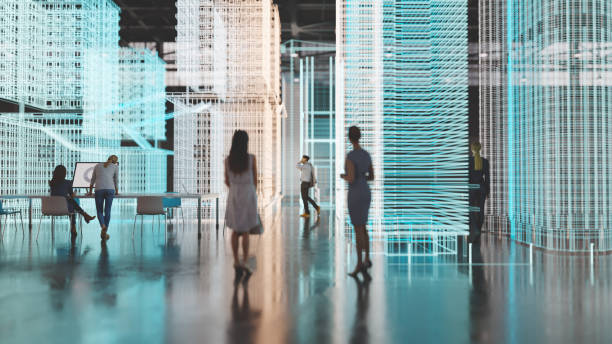Neon Renaissance: The Vibrant Revival of Luminous Art
In the realm of contemporary art, a dazzling resurgence is illuminating galleries, cityscapes, and digital spaces alike. Neon art, once relegated to the realm of commercial signage and retro aesthetics, is experiencing a vibrant renaissance. This resurgence is not merely a nostalgic nod to the past, but a dynamic reimagining of luminous expression that's captivating artists, collectors, and audiences worldwide. As neon bends and glows its way back into the artistic spotlight, it brings with it a fusion of tradition and innovation that's electrifying the art world.

From Commercial Kitsch to Artistic Expression
As neon signs proliferated through the mid-20th century, their ubiquity in advertising led to a perception of kitsch. However, artists began to recognize the medium’s potential for creative expression. Pioneers like Gyula Kosice in the 1940s and Dan Flavin in the 1960s incorporated neon into their sculptures, elevating it from commercial tool to fine art medium. This period saw neon transcend its utilitarian origins, becoming a vehicle for conceptual and minimalist art.
The Digital Age Dimming
The advent of LED technology in the late 20th century posed a significant challenge to neon’s dominance. LEDs offered energy efficiency and versatility that threatened to render neon obsolete. Many neon workshops closed, and the craft of neon bending seemed destined for obsolescence. This decline coincided with a shift in aesthetic preferences, as digital screens began to dominate visual culture.
The Unexpected Illumination
Despite predictions of its demise, neon has experienced a remarkable resurgence in recent years. This revival is driven by several factors, including a growing appreciation for handcrafted aesthetics in an increasingly digital world. Artists and designers are rediscovering neon’s unique qualities - its warm glow, its physicality, and its ability to transform spaces. This renewed interest has sparked innovations in neon art, blending traditional techniques with contemporary themes and technologies.
Neon in the Contemporary Art Landscape
Today’s neon renaissance is characterized by diversity and innovation. Artists like Tracey Emin use neon to convey deeply personal messages, while others like Olivia Steele create large-scale installations that interact with natural environments. The medium has found new life in unexpected places, from high-end galleries to public art projects illuminating urban spaces. Neon’s versatility allows it to address a wide range of themes, from sociopolitical commentary to explorations of identity and emotion.
The Craft Behind the Glow
The resurgence of neon art has also revitalized the craft of neon bending. This intricate process, which involves heating glass tubes and manipulating them into shapes, requires skill and patience. As demand for neon art grows, a new generation of artisans is learning this time-honored craft, ensuring its survival and evolution. Workshops and educational programs dedicated to neon art are emerging, fostering a community of practitioners and enthusiasts.
Neon’s Digital Dialogue
Interestingly, the digital world that once threatened neon’s existence is now contributing to its revival. Social media platforms have become showcases for neon art, with its vibrant colors and luminous quality making it inherently “Instagrammable.” This digital exposure has introduced neon art to new audiences and contexts, sparking collaborations between neon artists and digital creators. The result is a fascinating dialogue between traditional craft and digital innovation.
Environmental Considerations and Future Glow
As neon art experiences a renaissance, questions of sustainability come to the fore. Traditional neon tubes contain small amounts of mercury, raising environmental concerns. In response, artists and manufacturers are exploring eco-friendly alternatives, including mercury-free neon and LED-based neon-style lighting. These innovations promise to keep the neon aesthetic alive while addressing environmental considerations, ensuring a bright future for luminous art.
Illuminating the Future
The neon renaissance represents more than just a trend in the art world; it symbolizes a broader cultural shift towards experiences that bridge the physical and digital realms. As we navigate an increasingly screen-dominated world, neon art offers a tangible, luminous connection to our environment. Its revival speaks to our enduring fascination with light as a medium of expression and our desire for art that illuminates both spaces and ideas. As neon continues to evolve and inspire, it promises to cast its warm glow on the future of artistic expression, lighting the way for new forms of creativity and engagement.





